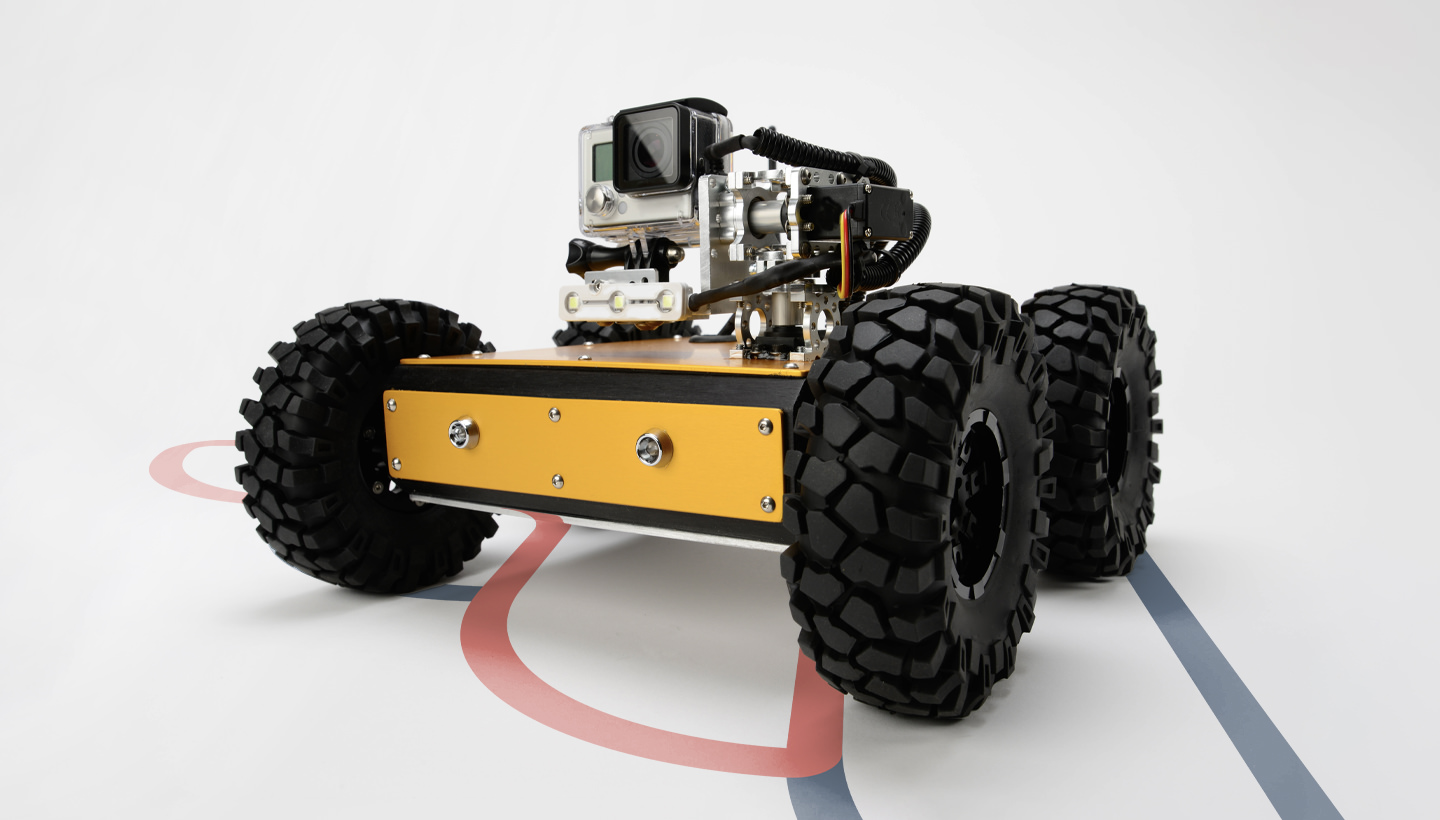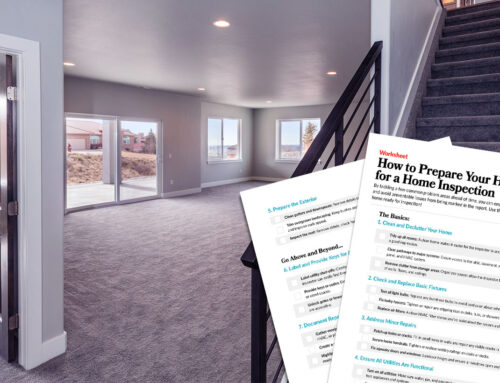
Using Robots for Home Inspections
Similar to how drones are being used in home inspections, robots are starting to see some action in the home inspection game. You may be thinking of something you’ve seen on “BattleBots.” But the bots used in home inspections tend to have less destructive tendencies and far more value. Bots are quickly proving themselves in the world of home inspection by keeping you safe and increasing your visibility in those hard-to-reach and hazardous areas. Plus, they’re pretty cool.
Read on to learn all about inspection robots, the pros and cons of using them, and what to consider before adding one to your toolkit.
What Are Inspection Robots?
Inspection robots — also known as inspection bots, crawl bots, or crawlers — help you visually inspect hard-to-reach areas around a home. These spots might include crawl spaces, attics, under decks, inside large pipes, inside HVAC ductwork, and any other vulnerable areas you might think twice about before entering.
Here’s a great video of a crawl bot in action during a crawl space inspection.
The key benefit of a robotic inspection is similar to that of a drone inspection. It gives you more visibility into the potential issues present in a space when you can’t or shouldn’t enter it for safety reasons. A bot can also be used to “preview” a space before physically entering. This helps you assess conditions and identify safety hazards.
How Inspection Robots Work
The home inspector remotely drives the inspection robot through a space, exploring the area while using the onboard camera to capture a live video feed of the conditions at hand. The inspector can also take still shots and video recordings to review later on in greater detail.
Standard Features of Inspection Robots
Features vary, but all inspection robots are generally constructed with these payload elements:
- Rugged Chassis. A durable chassis helps scale rugged terrain.
- Large Wheels. Rugged tires or tracks enhance mobility.
- Camera. A high-resolution onboard camera is either fixed in place or designed to tilt and pan.
- Sensors. Remote sensors detect obstacles on the ground and help you steer the bot.
- Lighting. LED lights illuminate dark spaces.
- Media Storage. Still shots and video recordings can be stored on an SD card.
- Power Supply. Most bots are powered with rechargeable lithium batteries and have a few hours of runtime on a full charge.
- Remote Control Interface. Bots can be controlled with a standard remote control or via an app run on a smartphone or tablet.
The Pros of Using Inspection Bots
Using an inspection robot offers a few big benefits when it comes to your safety, speed, and coverage.
- Reduced Hazards. Inspection bots can be your “eyes” into tight spaces, helping reduce your risk of injury and potentially lowering your inspector insurance costs.
- Wider Coverage. A crawler allows you to inspect areas you might not be able to get to and note those observations in your inspection report.
- Faster Inspections. Manual crawl space inspections take time because of the inherent risks involved. Crawl bots can help speed up the process.
- More Confidence. Remote visual inspections are great for safer, more proactive maintenance checks performed for a client at any time.
The Challenges of Using Inspection Bots
Benefits aside, there are some challenges to think about before adding an inspection robot to your inspector toolkit.
- High Cost. Like drones, inspection robots can be pricey. The more bells and whistles a crawler has, the more expensive it gets.
- Technology Limitations. Even the most high-end inspection bots can malfunction at times and experience unexpected downtime due to extreme weather, obstacles, and connection issues.
- They Don’t Replace a Human Inspection. Bot technology shouldn’t replace your skillset and your visual inspection. Always follow the home inspection Standards of Practice.
Things To Consider Before Using an Inspection Robot
As with any new home inspection tool, you need a plan of action before adding it to your toolkit and home inspector routine.
Consider What Features You Need
Inspection crawlers have so many options, it can be hard to choose. Before investing in one, do your research and consider the features you’d like to have. Make sure to prioritize your must-have features as you compare models. Add-on features you might consider include:
- Drive Mode Options. Some bots have 4- and 6-wheel drive for use on various types of terrain.
- Camera Pan and Tilt. Cameras that pan and tilt provide more remote visibility and coverage.
- Higher Resolution Camera. A higher-resolution camera means you’ll get clearer photos and video footage.
- Bright LED Lights. Brighter lights, and more of them, help illuminate dark spaces.
- Dust and Water Resistance. This added feature helps preserve the unit’s function in especially unforgiving areas.
- Longer Battery Life. A longer runtime means more convenience and no stopping to charge.
- Tethered or Wireless Operation. Tethered bots are easier to retrieve during unexpected downtime, but often harder to operate. Wireless inspection bots are generally easier to use but may experience more downtime.
- More Rugged Wheels. Bots with all-terrain tires or tracks help make scaling ground obstacles easier.
Here’s a helpful video from Inspectorbots that compares features on lower- to higher-end crawler models. You can also take a peek at SuperDroid’s line-up of home inspection robots for a better idea of cost and features.
Don’t Let the Inspection Bot Replace Your Skills
Never let the inspection bot replace your skills as a trained home inspector.
“There’s an old saying in home inspection: ‘My tools and technology are used to prove what I already believe,’” says AHIT Instructor and 20+ year home inspector, John Coleman. “New inspection technology may prove to be beneficial in some cases, but nothing beats a comprehensive visual inspection of a crawl space or attic.”
When it’s possible and safe, a firsthand visual inspection is best.
Coleman adds that if you find you’re limited in access to a specific area, you should note the limitations in your report, regardless of whether you use an inspection bot or not. The home inspection Standards of Practice are meant to protect you in these instances.
Practice, Practice, Practice
New technology has a learning curve, inspection robots included. Before using your inspection robot professionally, make sure you practice. Practice using it in your own crawl spaces or those of friends’ homes. Drive it around different types of terrain. Become familiar with the controls and settings and how to troubleshoot problems. Bring it along on an inspection only when you’re fully comfortable using the technology.
Add Equipment Coverage to Your Insurance Policy
If you plan to use an inspection bot, it’s important to make sure you add equipment coverage to your home inspector insurance policy. General Liability coverage for home inspectors covers you if your crawler damages property or injures a person during an inspection. However, it won’t cover the robot itself. A separate rider for equipment coverage is necessary.
Inform Your Client That You Might Use an Inspection Bot
As with drones, the same courtesy guidelines apply when using inspection crawlers. You should inform your client that you may use an inspection bot during portions of your home inspection and discuss the benefits and limitations of using it. You may even consider updating your pre-inspection agreement to include verbiage that covers your use of the bot. Make sure to follow your client’s preferences. If they’re not comfortable with your use of the technology, don’t use it.
The Future of Robots in Home Inspection
New technology like inspection crawl bots and drones will continue to advance and secure a place in a home inspector’s toolkit. Home inspectors who embrace these new technologies – and use them in ethical ways – often have a marketing advantage over inspectors who don’t.
However, they are no substitute to knowing the basics. Manual visual inspections are still the gold standard.
“Inspectors still need to know and understand what they’re observing, whether or not it could be an issue, and what solutions they would recommend to their clients going forward,” Coleman says. “As technology improves, we all want to gravitate toward tools that make our job easier. The key is knowing when to use them and how to report the findings.”
AHIT Training Helps You Master the Home Inspection Standards
AHIT’s best-in-class home inspector training course, home inspection certification programs, and professional development courses help you master the fundamentals of home inspection — before you begin driving around that inspection bot. Find your state course and get started today.




